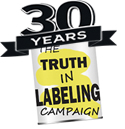Evidence of MSG-Induced Brain Damage
In 1957, Lucas and Newhouse first noticed that severe retinal lesions could be produced in suckling mice (and to some extent in adult mice) by a single injection of glutamate. At the time, researchers were using inexpensive monosodium glutamate (brand name Accent) for their studies instead of using more expensive pharmaceutical grade glutamic acid.Studies confirming their findings followed shortly, with others being reported from time to time. These studies concerned themselves not only with the confirmation of free glutamate induced retinal lesions, but with the formulation and testing of hypotheses to explain the phenomenon.
In 2002, Ohguro et al. found that rats fed 10 grams of sodium glutamate (97.5% sodium glutamate and 2.5% sodium ribonucleotide) added to a 100-gram daily diet for as little as 3 months had a significant increase in amount of glutamic acid in vitreous, had damage to the retina, and had deficits in retinal function. Ohguro et al. also documented the cumulative effect of damage caused by daily ingestion of the flavor enhancer called MSG.
In 1969 Olney became suspicious that obesity in mice, which was observed after neonatal mice were treated with monosodium glutamate for purposes of inducing and studying retinal pathology, might be associated with hypothalamic lesions caused by monosodium glutamate treatment; and in 1969 he reported that monosodium glutamate treatment caused brain lesions both in the developing brains of neonatal mice, and in the brains of adult mice given glutamate subcutaneously. Over the course of the following decade, Olney’s original reports were repeatedly confirmed.
In response to findings of brain damage, subsequent endocrine disorders, and adverse reactions, glutamate industry agents pretended to replicate the studies done by Olney and others, but did not do so. They have used scientists-for-hire, rigged research, infiltrated government agencies, taken control of major media, and maintained a vigorous propaganda campaign as tools with which to bolster their claim that monosodium glutamate is a harmless, even beneficial, food additive.

